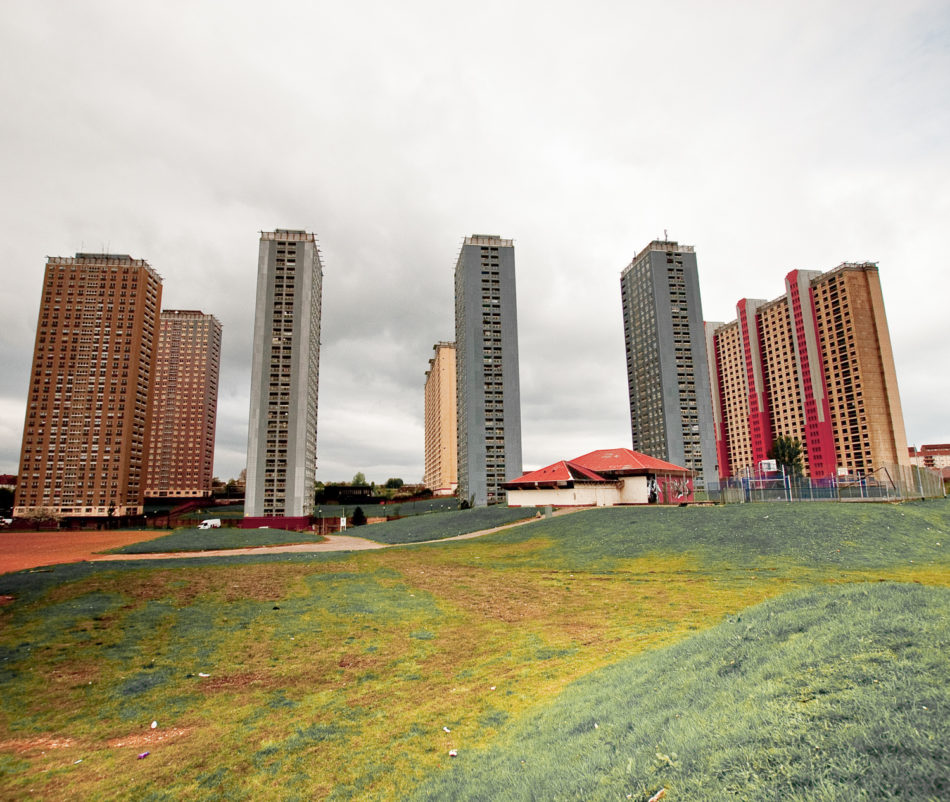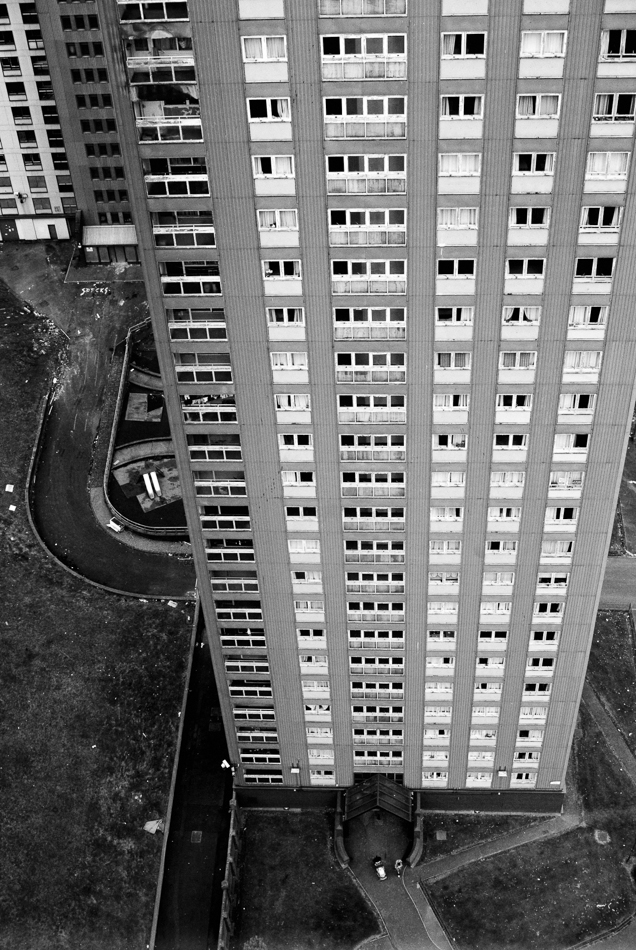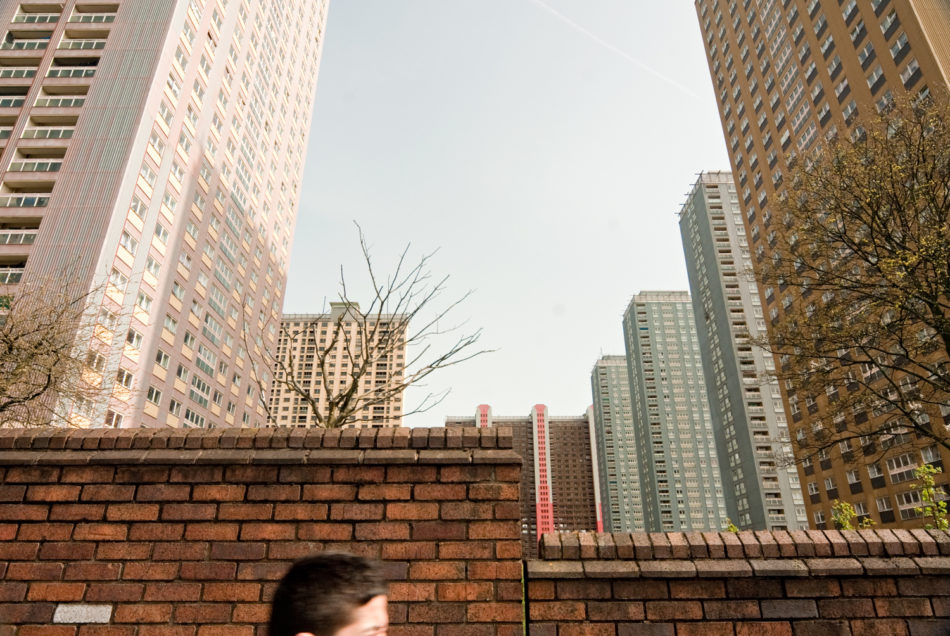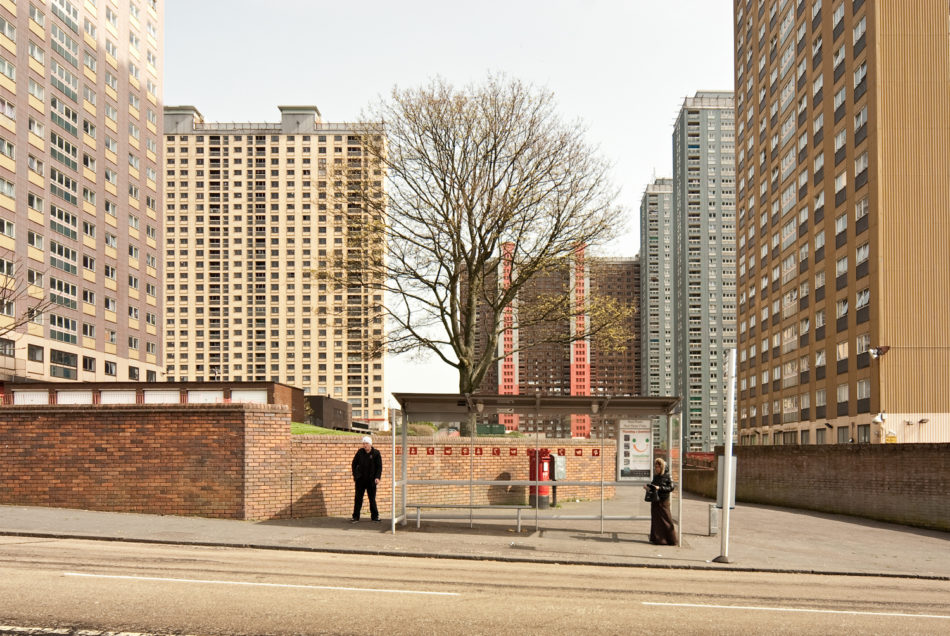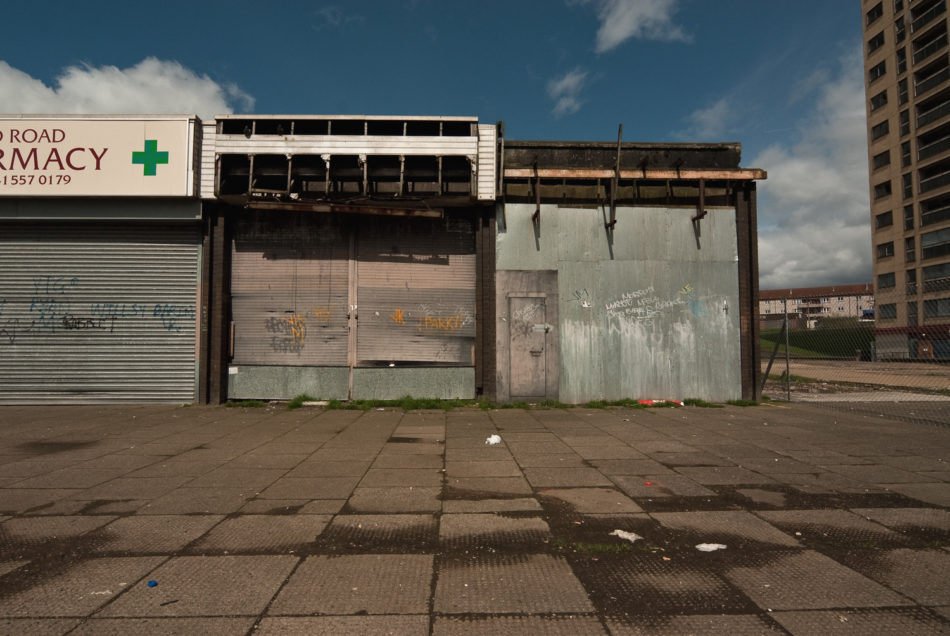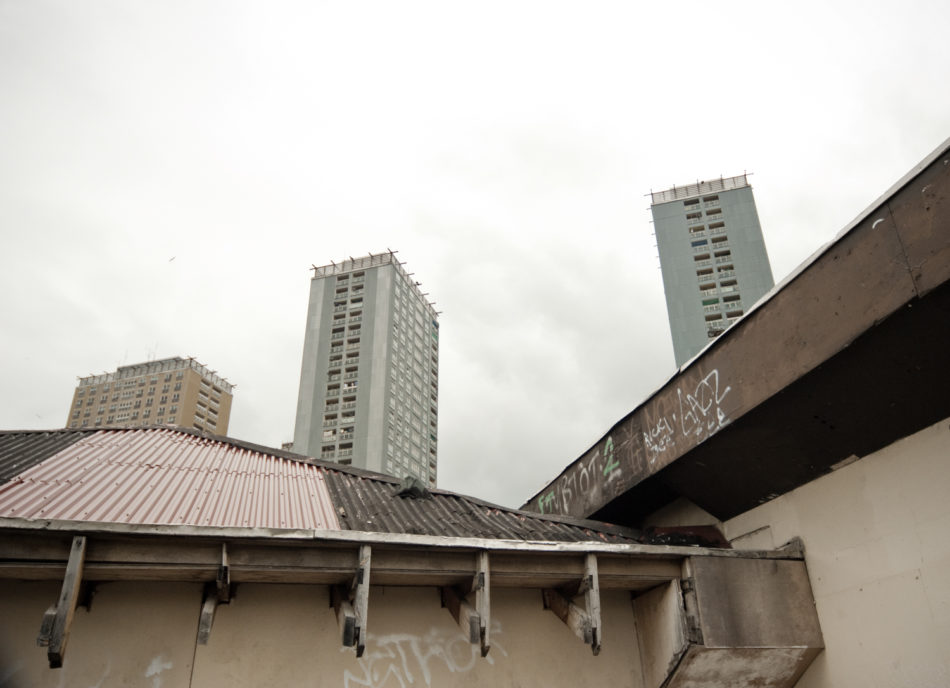The Red Road Flats
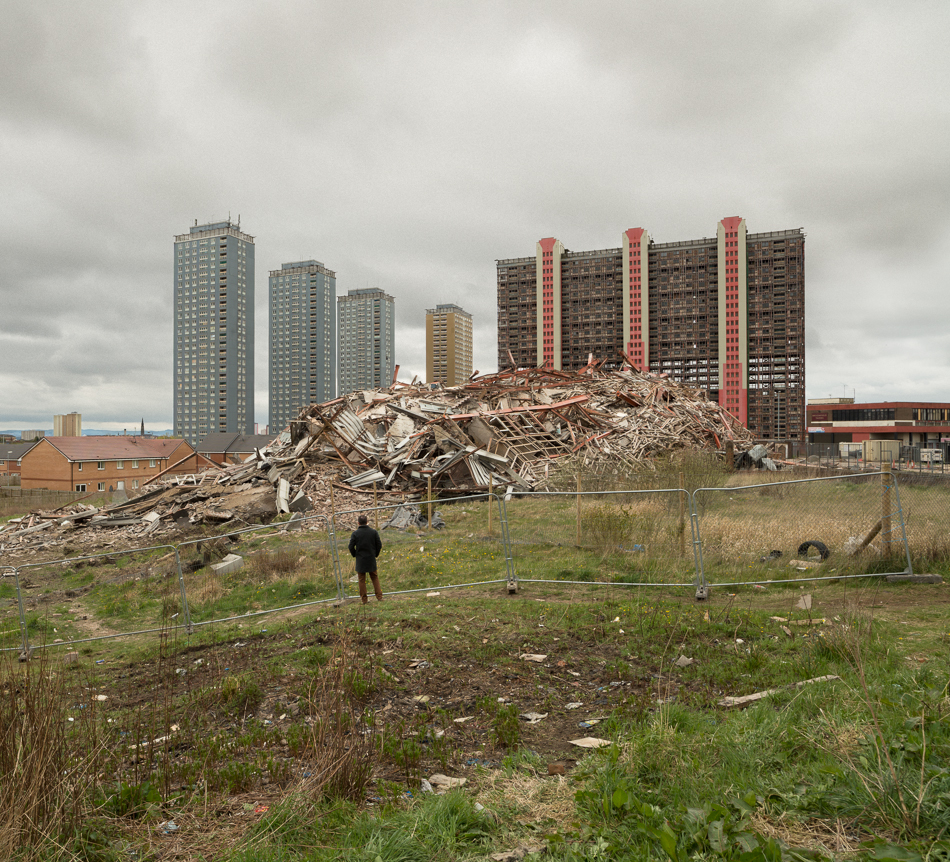
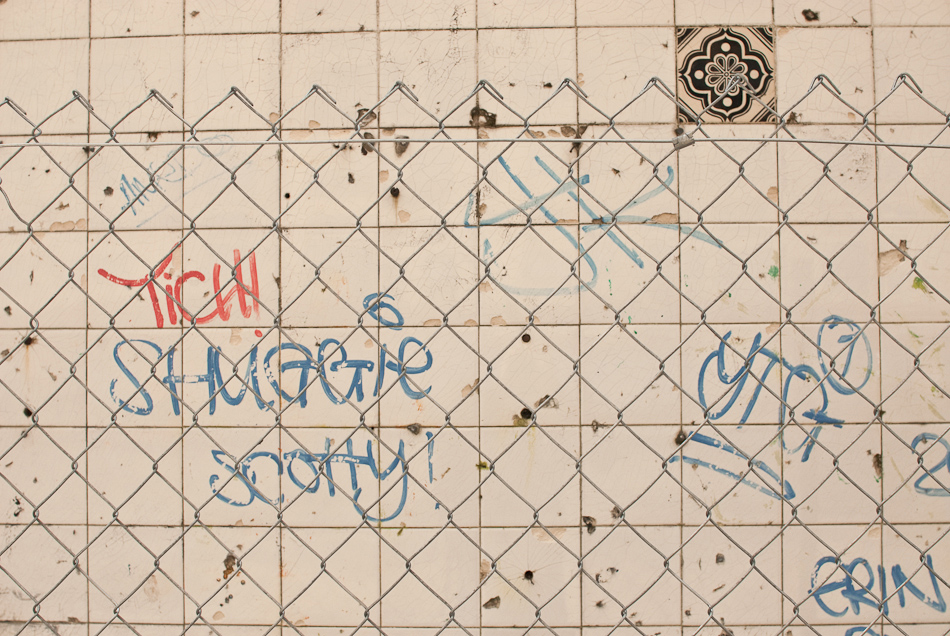
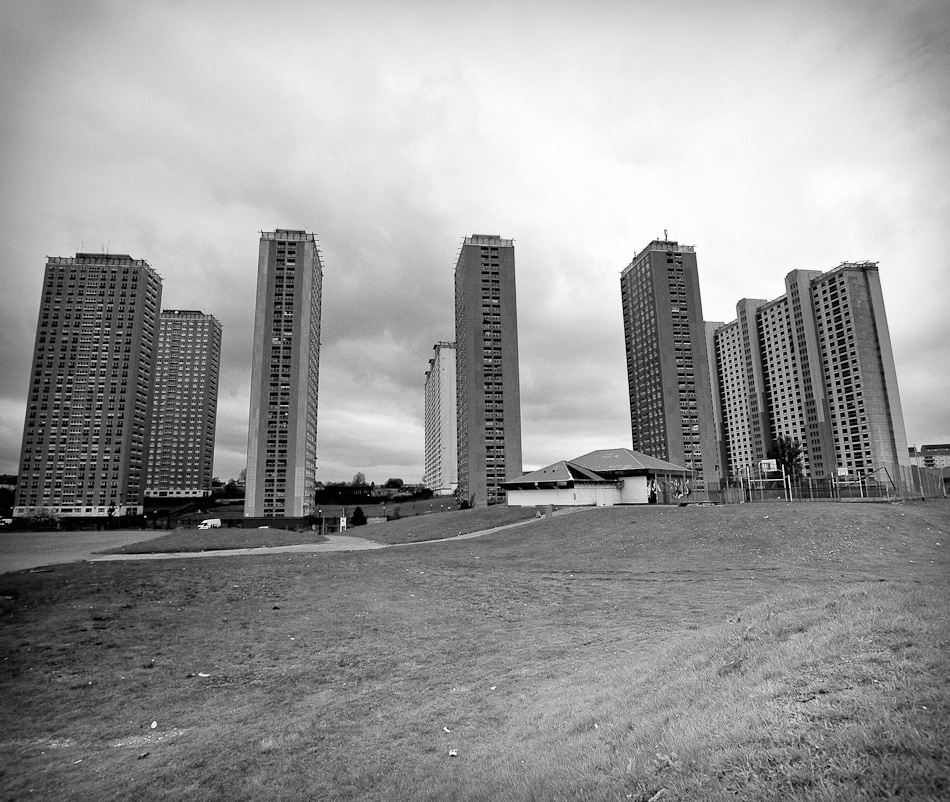
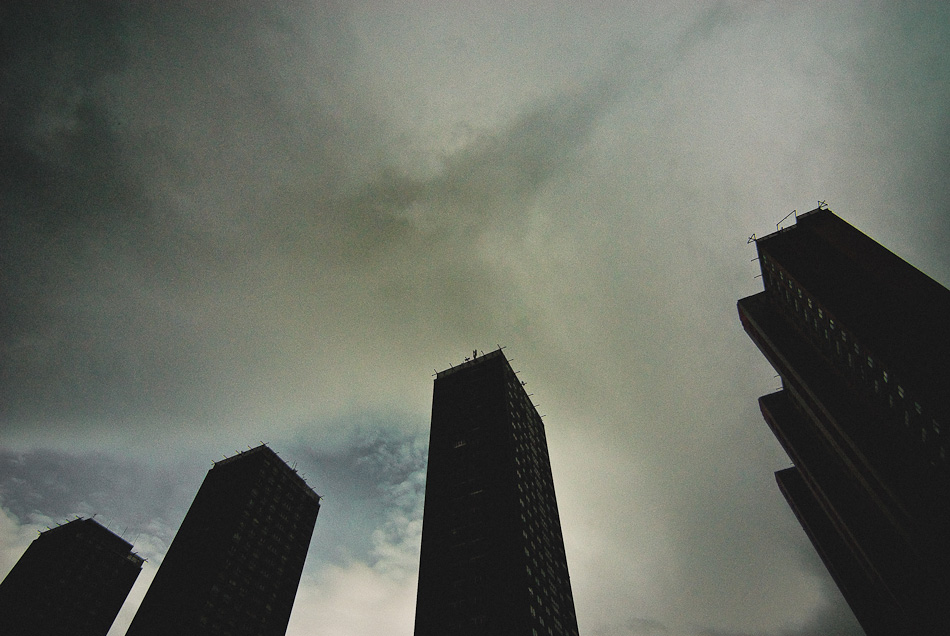
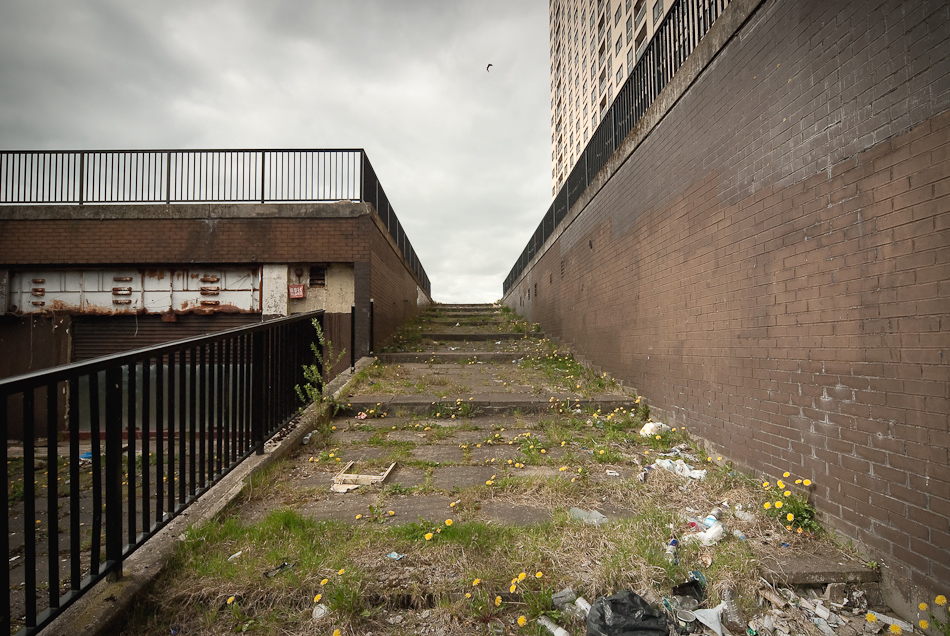
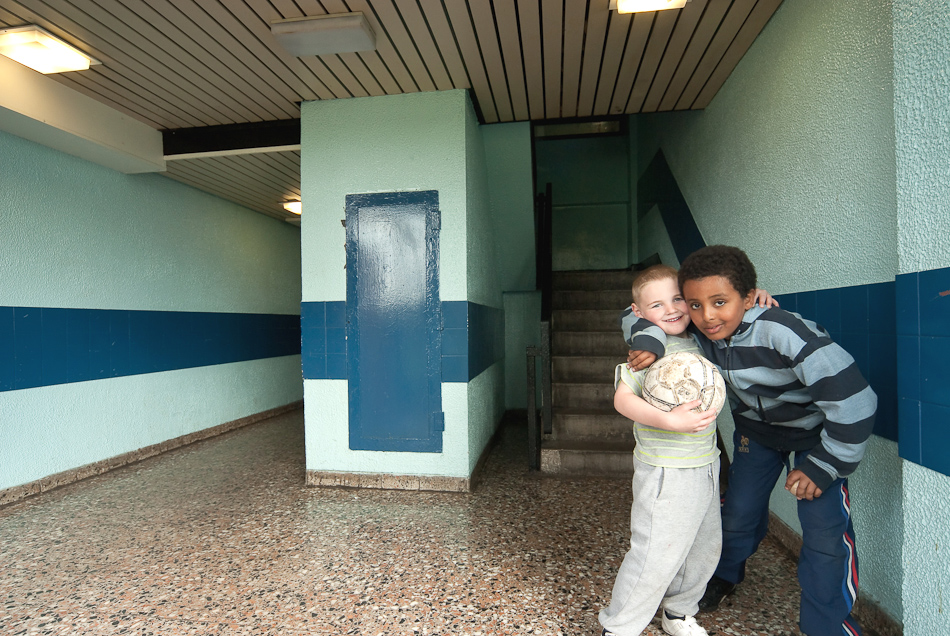

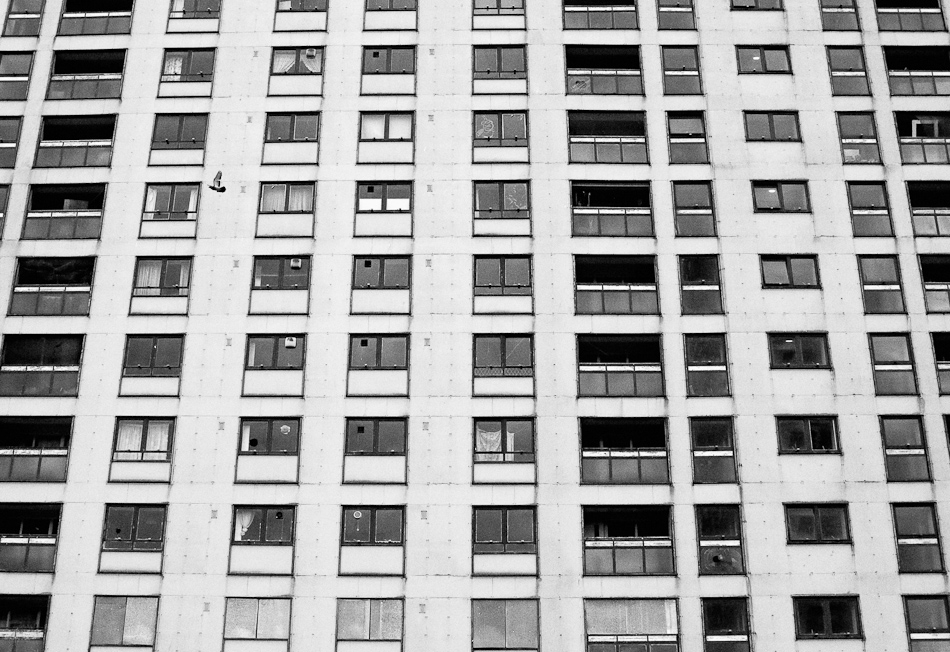
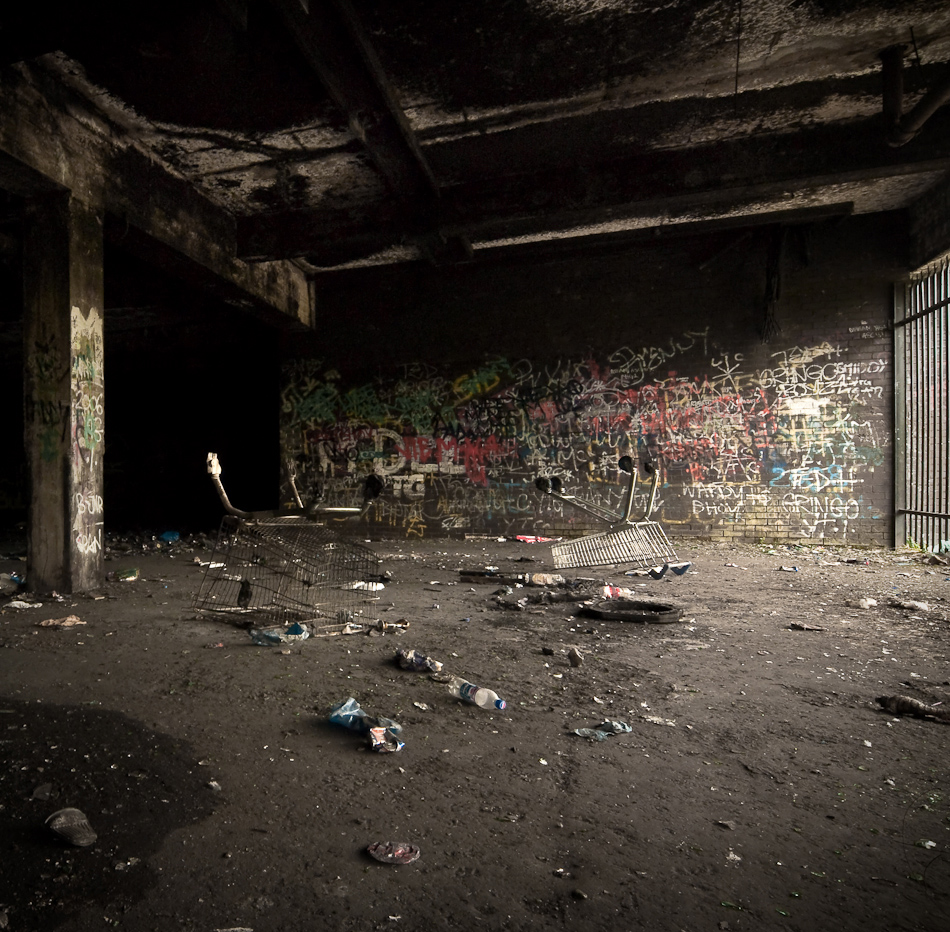
‘Red Road, Glasgow. Their final demise has begun.
Build me up, just to knock me down. We‘ve been standing in the cold for decades now.
You promised us shelter, a new life, happiness. Where did it all go wrong.
Lets start again, roll out the demolition. We’ll do it right this time. We’ll make it work.’
‘No commonwealth explosion or digital sensation; just a fall from grace, a lost sense of place.
A fall from sky, into the dirt; homes, memories and aspirations burst.
A final call from the Red Road Flats. Forget us not, so we touched a lot.
Lets start again, respect the past. We’ll do it right, We’ll make it work‘
(Red Road demolition poem Tom Manley – 2014)
‘The radiant city or so it was meant to be,
Radiant in bleakness, monotony and scale.
Like tombsones.
Solemn, Still
‘A broken promise from Glasgow with love
Undying hope, pierced by shafts of light.
Fragile, tired, silhouetted.
In distant dreams prevail’
‘Where do we go from here
In Glasgow we stand like towers.
Wondering where all of that hope went.
I’m thinking of some places to go’
(Red Road demolition poem Tom Manley – 2019)
It’s been a slow and prolonged demise, dismantling and preparing for demolition. An air of dystopia cirlces around conversations of their demise, whilst their powerful imprint on the memory of the city has fuelled writer’s books, photographer’s projects and a debate around the type of places we want to house our communities; as the last of temporary inhabitants, refugees and asylum seekers have been rehoused prior to the estates removal from the landscape.
The following text and images are edited from a commission for Urban Realm Magazine Urban Realm Magazine – Spring 2010 – RedRoad Demolition
Driving towards Red Road a feeling of trepidation was heightened as I approached the towers. Adding to my feeling of unease was the estate’s troubled reputation for antisocial crime and the quick decline in the quality of the environment it has provided for many of its residents. A familiar presence to the northern skyline as one enters or leaves the city, the assorted mass and volumes of these towers were suddenly now creating new perspectives, as I got close. On arrival a cost cutter store nestled beside a few other dilapidated and boarded up shops at the heart of the estate. It’s perhaps now, with nowhere else to go, that the sheer scale of this place within the landscape is realised, looming above the predominantly suburban style surroundings.
I was here at short notice, my camera with me to capture what I could of the condition and current state of this area. Soon after arriving another photographer pulled up and quickly fired off some shots before retreating out of here. Was he thinking what I was thinking? Resigned to its approaching demise, with the clearance of flats and dismantling of two blocks underway, the physical scars and signs of neglect appears to overshadow the remaining fabric and built environment that residents interact with.
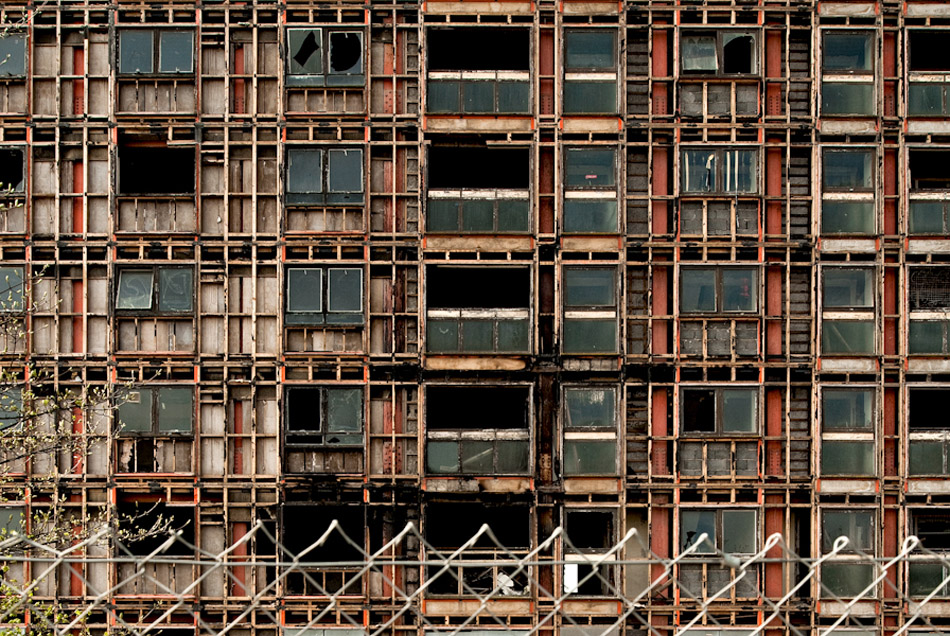
The demolition of buildings integral to a community, along with the associated relocation of residents has echoes across Scotland and the UK. High Rise living may be coming to an end in Glasgow, but new tensions are created, in expectation of individual’s uncertain future and ongoing personal journeys. An all to often reality with many residents often seeking asylum, becoming used to constant displacement and relocation, whilst increasing pressure is put on housing associations and local authorities.
There are parallels here with the modernist ideals of the place as a whole. As if heralding a brave new world the area was declared to bring all the amenities of modern life to the area of Springburn and beyond. Constructed between 1964 & 1969 it was hoped that high rise living with lock ups, garages, and landscaping would provide a new alternative – a solution to the urgent housing needs of the time.
Staring into the sparse walls of the towers, a mesmerising grid of windows signifies the many stories and lives, which have been contained behind these facades. Perhaps not typical, but symbolising the well documented failure and isolation of many such areas “just knock me down with the building – Don’t bother shifting me” is a harsh reaction by one resident. An array of boarded up windows, now a poignant demonstration that the end of an era has been reached for Red Road. The harsh impact of such an environment may be to blame for draining and eroding the identity out of communities and their sense of belonging, but people here have shown strength and optimism for their future.
An ominous calm pervades the area whilst I was here; – courteous smiles, impeccable politeness and the sense of a community getting on with things manages to override the real crisis many residents have found themselves in. One resident told me he quite liked the towers, referring to their magnificence amongst the wider landscape, – “they look better than a lot of the stuff nearby” hinting that perhaps leaving nature to take its course might be a more suitable and fitting end.
Of course personal circumstances can strengthen or isolate any attachment to an area and good quality, imaginative design can help to relieve pressure on a community like this. With the unmanageable cost of repair and upkeep, and seeking a brighter future for the citizens of Red Road, demolition was a done deal. (At the time of writing, the future for the site had yet to be decided by Glasgow City Council, and the partnerships overseeing regeneration will need to decide how to respond to the legacy that these 9 towers will leave on Springburn and its wider location).
The demolition will further scar the landscape and leave a presence in the foundation marks and open spaces left behind. To me it would seem strange to concrete over and start again – filling in the gap with a sea of houses that seamlessly blend into the immediate surroundings; so called regeneration – more a recondition. Glasgow nearly heralded their demise in a futile Commonwealth Games opening sensation, however these flats will leave a legacy behind both positive and terrifying – mistakes in tenure and construction, lack of maintenance and connections to the city must be remedied. Glasgow cannot just wipe their memory away. Over the last 5 decades many different groups of tenants have come and gone and the future success of the area may well depend on establishing exactly who any future regeneration is for. How the needs of the community can best be provided for through design, infrastructure, cultural resources and opportunities for health and environmental improvements, will be a big challenge.
